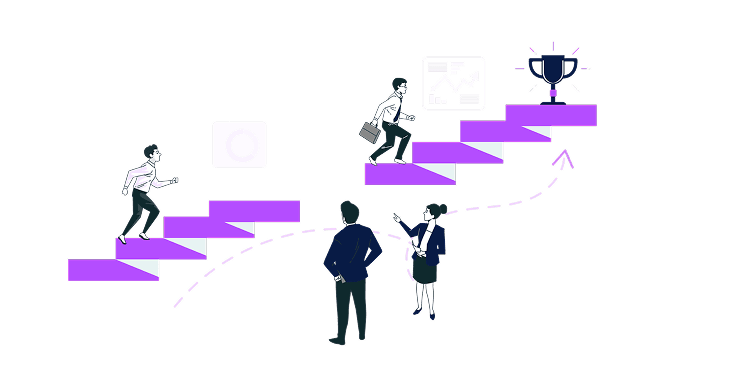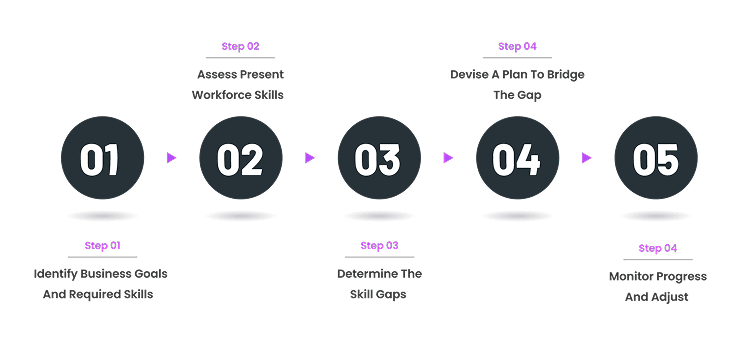A skills gap analysis is a strategic process conducted by an organization to identify the imbalance between the technical abilities the employees currently have versus the technical abilities required to achieve business goals. Additionally, it helps the organizations to spot the areas where their workforce needs enhancements for boosting productivity and overall efficiency.
 Since the world is rapidly evolving due to technological advancements, it is highly recommended for both the individuals and employers to conduct a skills gap analysis on a regular basis. This would not only help in improving operational efficiency but aid in staying competitive, adaptable, and well-prepared for future challenges.
Since the world is rapidly evolving due to technological advancements, it is highly recommended for both the individuals and employers to conduct a skills gap analysis on a regular basis. This would not only help in improving operational efficiency but aid in staying competitive, adaptable, and well-prepared for future challenges.

It is considered highly important and investable to the following key benefits:
1-Improves Workforce Planning
A skills gap analysis enables organizations to stay ahead by identifying the essential skills their workforce needs. Rather than scrambling to address skill shortages when they arise, companies can take a proactive approach to employee development. This ensures they have the right talent in place to support growth and long-term success.
2-Enhances Employee Development
A skills gap analysis allows the learning and development department of the companies to design tailored training plans as per employee lacking areas. This not only helps the businesses to make their teams prepared for upcoming challenges but also enables the employees to succeed in their careers by adding to skillsets.
3-Reduces Hiring Costs
Prolonged diagnostic processes can have a domino effect, leading to late treatment starts and poor health outcomes. For serious illnesses like cancer, each day’s delay can decrease the chances of survival.
A skills gap analysis should be conducted through a set pattern as it would ensure accuracy. Here is a step-by-step approach to administer an effective skills gap analysis:

Step 1: Identify Business Goals And Required Skills
The first step is always to draw an outline with regards to what is required. Outline your business goals and objectives in detail. And then identify the skills your employees would be requiring to achieving these goals.
Step 2: Assess Present Workforce Skills
After determining the required skills, the next step is gathering information about your workforce’s current set of skills. It can be gathered through various methods such as surveys, self-assessments, manager evaluations, tests, and others.
Step 3: Determine The Skill Gaps
Now after assessing the current skills of the workforce, compare them to the skills required in step 1. The comparison will help you in prioritizing the areas of immediate action and areas of long-term action.
Step 4: Devise A Plan To Bridge The Gap
Utilize strategies to enhance the employees' capabilities and skill sets so that they are able to adapt to the changing dynamics of the market. These strategies include training workshops, online certifications, speaker sessions, and others.
Step 5: Monitor Progress And Adjust
Make the skills gap analysis a continued initiative as digital evolution would keep on adding to the need for new skills. Thus, you must implement a mechanism to track the progress of employees by using key performance indicators (KPIs), manager feedback, and others. 
Skills gap analysis is a strong option for businesses to adjust themselves as per the industry’s technological or procedural advancements. A skills gap analysis isn’t just valuable for businesses—it also helps employees by creating opportunities for growth and career development.
Want to take the first step in strengthening your workforce? Download our Skills Gap Analysis Template today and start building a more skilled and future-ready team!